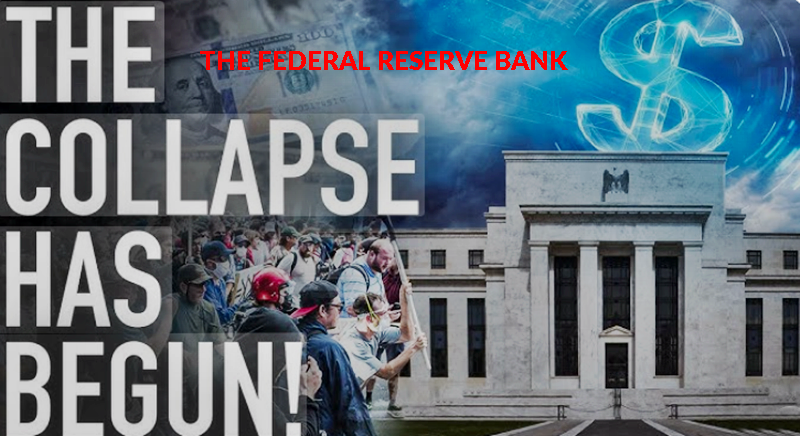Playing with Fire: A Mises Institute Film on the Federal Reserve

By Mises Institute - 18 May 2025
The Fed Isn’t Saving the Economy—It’s Sabotaging It. The Federal Reserve is an arsonist posing as a firefighter. During a financial crisis, the Fed arrives on the scene with a hose hooked up to its own spigot of unlimited money.
The financial sector cheers on their heroes for rescuing their balance sheets from the fire and financial journalists begin drafting their hagiographies of the Fed chair for his “courage.” In Playing with Fire: Money, Banking, and the Federal Reserve, the Mises Institute dispels these myths about the Fed. The documentary shows that far from being the hero of the story, the Fed is the villain.
Despite their sophisticated economic models and platitudes about the Fed’s independence, the dual mandate, and the need to “balance risks,” the Fed
- failed to predict major crises, even ones of their own making
- functions as the US Treasury’s money printer
- restricts economic growth
- protects banks from suffering losses associated with their own risky lending practices
- drives the business cycle
Since ancient times, governments have realized that control over money and banking is essential for growing in size, scope, and power. The reason is simple: Taxes are unpopular, but inflation is subtle. Governments would stay small if every significant expansion meant risking a tax revolt. With the power to clip coins, debase the metals in coins, or simply print more paper money, the government can easily spend beyond its ability to tax and borrow. As Alex Pollock points out in the documentary, “That’s what all governments want: to spend more money than they have.”
But these actions come with consequences, and as our experiment with central bank–managed fiat money has shown, the consequences are disastrous.
The documentary begins with some basics about money and banking: Money is the generally accepted medium of exchange and serves as the crucial pricing unit in the market. Entrepreneurs and consumers use money prices to make the best use of scarce resources. Some businesses, like the early goldsmith banks, specialized in keeping money safe. These banks would issue banknotes to depositors, who could later redeem them for their deposited money.
But eventually fractional reserve banking (lending out banknotes for more money than the banks had in reserve) created a fragile banking system open to bank runs. The Fed was originally created to deal with this problem, serving as a lender of last resort for banks teetering on failure. Even at the outset, then, the Federal Reserve introduced moral hazard into the banking system.
The Fed’s role only expanded from there. FDR illegally prohibited private gold ownership beyond very small amounts, giving the Fed even more room to expand credit through the banking system. The Fed became the Treasury’s money printer and financed world wars and giant spending programs. Finally, Nixon severed the dollar’s remaining ties to gold in 1971, giving us the purely paper fiat dollar we have today.
Just one result of unconstrained fiat money has been the financialization of the economy. Since money printing favors those closest to the source of the new money, we’ve seen finance, insurance, and real estate expand at the expense of other productive industries.
In the documentary, Jim Grant of Grant’s Interest Rate Observer defines financialization as “the treatment of finance not as the means to an end, but as an end in itself.” Thanks to financialization, he explains, “dominant Wall Street banks are now cartels empowered by the Federal Reserve.”
The special treatment of favored financial institutions was never more apparent than with the bank bailouts during the great financial crisis of 2008. This crisis was caused by Fed money printing during the 2000s to stimulate the economy after the dot-com bust and to encourage home ownership with artificially low mortgage rates. Despite being the culprit, the Fed grew and took on even more “monetary policy tools.” According to Mises Institute Academic Vice President Joe Salerno, “They were brazen about what they were doing, open about picking the winners.”
Because of the Fed, we experience a cycle of crises. Even before covid, it looked like the US was heading toward another bust, but the pandemic gave the government a scapegoat and the opportunity to expand in unprecedented ways. Mises Institute Senior Fellow Mark Thornton explains: “When covid hit, the government decided to spend trillions of dollars to keep the economy going, and the Fed accommodated that by basically printing trillions of dollars.”
The covid-era money printing brought about the highest rates of price inflation in decades. But this is just one example of many Fed-caused disasters. As Ron Paul stated in the documentary, “We live in very, very dangerous times mainly because we’ve allowed the Fed to control the world monetary system.”
What’s the solution? How do we return to sound money and honest banking practices? We must take financial institutions back from the government. Mises Institute President Tom DiLorenzo closes the documentary with a wise observation from Murray Rothbard: “If government got in the business of making shoes early on, people would be saying, ‘Well, who would make shoes?!
The government has always made shoes!’ And the same thing goes for the Fed. A lot of people think, ‘Well, yeah, the Fed has always been in control of the money supply.’ But it hasn’t.” We have to end the Fed and allow the market to select a money that we can trust to keep its value.
This post is sponsored content and ZeroHedge has been compensated for its publication.
